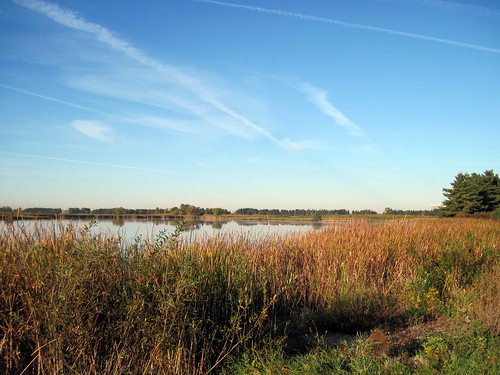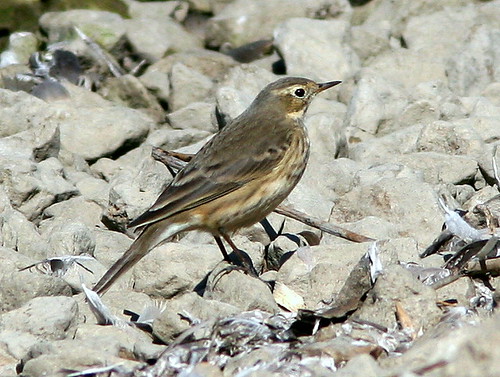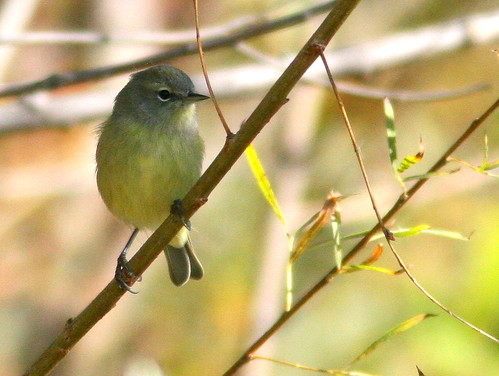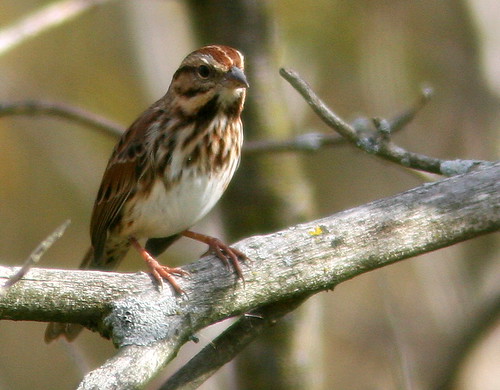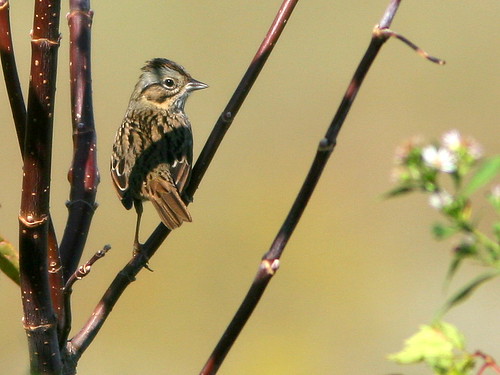We have been enjoying remarkably fair Autumn weather at our second home in northeast Illinois. In between the obligations and joys of sharing time with family and friends, there has been time for at least one birding excursion nearly every day.
One interesting venture last week was with Kane County Audubon Society, to the Fermi National Accelerator Laboratory (Fermilab ). Located in Batavia near Chicago, Illinois, this is a US Department of Energy national laboratory specializing in high-energy particle physics. Fermilab is very birder-friendly, and there is a great variety of natural habitat on their extensive grounds. The official Fermilab web site has an interactive map with links to the various birding “hot spots” within the 6800 acre facility. Peter Kasper updates a current list of bird sightings that is worth watching, as many rarities have appeared there over the years.
We gathered at the famous “Red Barn,” and walked the area known as Village Lakes:
Lake Law is near the start of the trail. It harbored lots of migrating Canada Geese, a pair of Pied-billed Grebes, and a few Green-winged Teal and American Coots:
Two American Pipits along the shore of Lake Law tolerated our close approach:
We had hopes of seeing Harris’s Sparrows, which have appeared in the Chicago area during the past couple of weeks and have been sighted at Fermilab many times in past years. Although I carried my camera on the walk, I put it to little use, something that often happens when I am hiking with a group. Alone, I am free to linger and look for the best shots, but this is hard to do when trying to keep up with other birders. For example, I got great binocular views of an Orange-crowned Warbler, but did not even think of my camera until it had flown into a thicket, the signal for the group to move on. I also failed to obtain photos of Fox Sparrows that lurked in the hedges.
Also in Batavia, but nearer to home, at Nelson Lake/Dick Young Forest Preserve, I did get a good shot of the normally reclusive Fox Sparrow that Mary Lou spotted for me: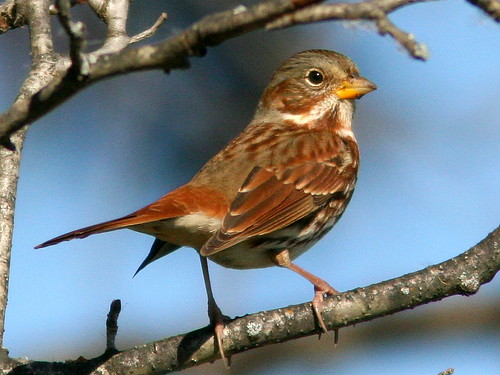
We also had better luck with Orange-crowned Warblers, finding them on three consecutive days at Nelson Lake and also this one at Jones Meadow Park in North Aurora, which was foraging with a single Ruby-crowned Kinglet in low vegetation. Note is characteristic broken eye-ring and yellow under the tail:
The Orange-crowned Warbler emerged into full light and plunged off its perch in pursuit of a green insect that looked like a Katydid:
Its free-fall ended with the successful capture of the insect:
Eastern Bluebirds had nested in Jones Meadow Park a couple of years ago, but none were there all summer until this past week, just about when we would expect this species to disappear on its southward migration:
We saw this bluebird at nearly the same location this past spring:
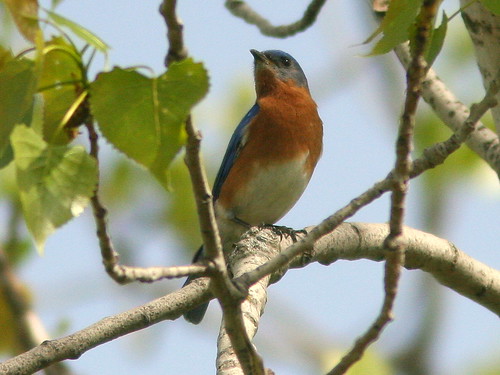
In contrast, a “snow bird,” an early arriving Dark-eyed Junco showed up on the same day. We have been seeing them for about a week, but this was the first I was able to photograph this fall:
White-throated Sparrows sang softly along the asphalt track at Jones Meadow. This is a tan-striped individual. Older field guides often identified these as immature or female birds, in contrast to the white-striped “adults,” but this color variation, usually also showing streaks on the breast, appears in adults of both sexes:
To illustrate the difference, here is a close-up of a white-striped bird that I photographed this past spring at nearby Lippold Park:
Song Sparrows also treated us to short bursts of song. This bird had a particularly reddish tinge to its plumage, initially making me think it was another Fox Sparrow. It reminded me of the southwestern subspecies that I often saw in New Mexico:
Nearby, another streaked sparrow, which I first thought to be a Song Sparrow with an unusually gray head, has the head pattern typical of Lincoln’s Sparrow, as Peter Kasper himself kindly pointed out:
The smaller Savannah Sparrow is shorter-tailed and often shows some yellow in front of its eyes:













